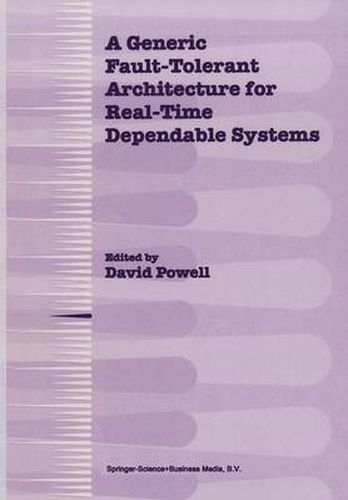Readings Newsletter
Become a Readings Member to make your shopping experience even easier.
Sign in or sign up for free!
You’re not far away from qualifying for FREE standard shipping within Australia
You’ve qualified for FREE standard shipping within Australia
The cart is loading…






This title is printed to order. This book may have been self-published. If so, we cannot guarantee the quality of the content. In the main most books will have gone through the editing process however some may not. We therefore suggest that you be aware of this before ordering this book. If in doubt check either the author or publisher’s details as we are unable to accept any returns unless they are faulty. Please contact us if you have any questions.
The design of computer systems to be embedded in critical real-time applications is a complex task. Such systems must not only guarantee to meet hard real-time deadlines imposed by their physical environment, they must guarantee to do so dependably, despite both physical faults (in hardware) and design faults (in hardware or software). A fault-tolerance approach is mandatory for these guarantees to be commensurate with the safety and reliability requirements of many life- and mission-critical applications. A Generic Fault-Tolerant Architecture for Real-Time Dependable Systems explains the motivations and the results of a collaborative project (Esprit project No. 20716: GUARDS: a Generic Upgradable Architecture for Real-time Dependable Systems), whose objective was to significantly decrease the lifecycle costs of such fault-tolerant systems. The end-user companies participating in this project currently deploy fault-tolerant systems in critical railway, space and nuclear-propulsion applications. However, these are proprietary systems whose architectures have been tailored to meet domain-specific requirements. This has led to very costly, inflexible, and often hardware-intensive solutions that, by the time they are developed, validated and certified for use in the field, can already be out-of-date in terms of their underlying hardware and software technology. The project thus designed a generic fault-tolerant architecture with two dimensions of redundancy and a third multi-level integrity dimension for accommodating software components of different levels of criticality. The architecture is largely based on commercial off-the-shelf (COTS) components and follows a software-implemented approach so as to minimize the need for special hardware. Using an associated development and validation environment, system developers may configure and validate instances of the architecture that can be shown to meet the very diverse requirements of railway, space, nuclear-propulsion and other critical real-time applications. This book describes the rationale of the generic architecture, the design and validation of its communication, scheduling and fault-tolerance components, and the tools that make up its design and validation environment. The book concludes with a description of three prototype systems that have been developed following the proposed approach.
$9.00 standard shipping within Australia
FREE standard shipping within Australia for orders over $100.00
Express & International shipping calculated at checkout
This title is printed to order. This book may have been self-published. If so, we cannot guarantee the quality of the content. In the main most books will have gone through the editing process however some may not. We therefore suggest that you be aware of this before ordering this book. If in doubt check either the author or publisher’s details as we are unable to accept any returns unless they are faulty. Please contact us if you have any questions.
The design of computer systems to be embedded in critical real-time applications is a complex task. Such systems must not only guarantee to meet hard real-time deadlines imposed by their physical environment, they must guarantee to do so dependably, despite both physical faults (in hardware) and design faults (in hardware or software). A fault-tolerance approach is mandatory for these guarantees to be commensurate with the safety and reliability requirements of many life- and mission-critical applications. A Generic Fault-Tolerant Architecture for Real-Time Dependable Systems explains the motivations and the results of a collaborative project (Esprit project No. 20716: GUARDS: a Generic Upgradable Architecture for Real-time Dependable Systems), whose objective was to significantly decrease the lifecycle costs of such fault-tolerant systems. The end-user companies participating in this project currently deploy fault-tolerant systems in critical railway, space and nuclear-propulsion applications. However, these are proprietary systems whose architectures have been tailored to meet domain-specific requirements. This has led to very costly, inflexible, and often hardware-intensive solutions that, by the time they are developed, validated and certified for use in the field, can already be out-of-date in terms of their underlying hardware and software technology. The project thus designed a generic fault-tolerant architecture with two dimensions of redundancy and a third multi-level integrity dimension for accommodating software components of different levels of criticality. The architecture is largely based on commercial off-the-shelf (COTS) components and follows a software-implemented approach so as to minimize the need for special hardware. Using an associated development and validation environment, system developers may configure and validate instances of the architecture that can be shown to meet the very diverse requirements of railway, space, nuclear-propulsion and other critical real-time applications. This book describes the rationale of the generic architecture, the design and validation of its communication, scheduling and fault-tolerance components, and the tools that make up its design and validation environment. The book concludes with a description of three prototype systems that have been developed following the proposed approach.